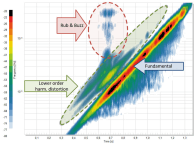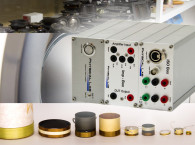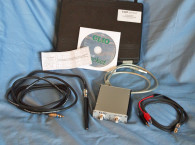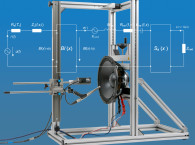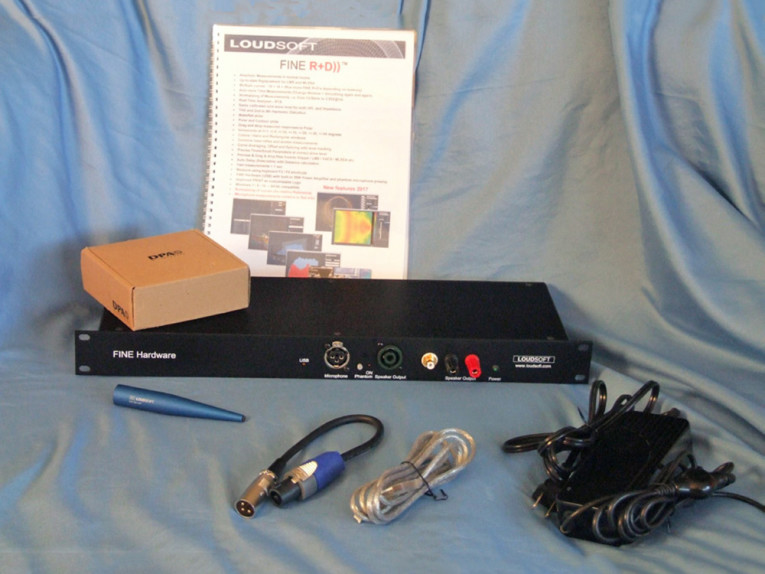
FINE R+D is a Fast Fourier Transform (FFT) analyzer packaged in a 1u rack (see Photo 1). FINE R+D comes with the hardware rack, a manual, an external power supply, a USB cable, a loop-back cable for calibration, and a DPA measurement microphone. Photo 2 displays a close-up view of the analyzer’s front panel, which includes a USB indicator LED, an XLR microphone input with a push-button switch for turning the phantom power on/off, an RCA line output jack for using outboard amplifiers, a Neutrik SpeakON jack for the built-in amplifier output, an additional regular four-way binding post for the amplifier output, and last, a power indicator LED. Looking at the back of the analyzer (see Photo 3), you will see the 15 V power supply input receptacle, plus USB out and USB in sockets.


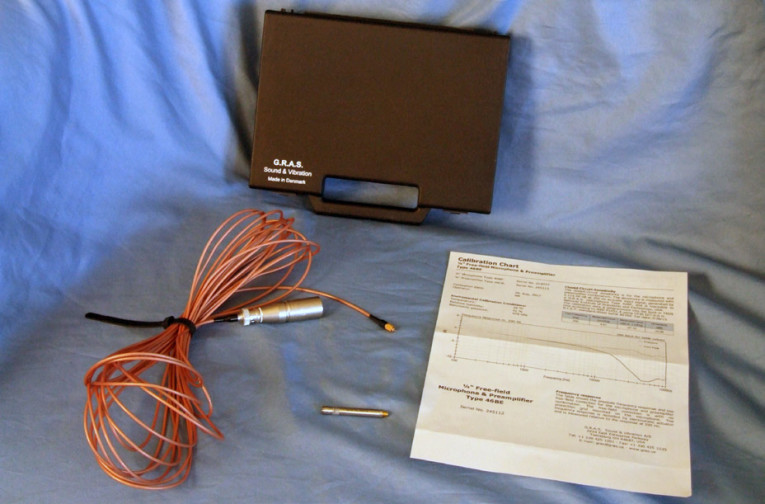

The included DPA microphone is actually quite good, but for enhanced accuracy, Loudsoft recommends using the G.R.A.S. 0.25” Type 46BE microphone capsule and preamplifier body, shown in Photo 4 and Photo 5. G.R.A.S Sound & Vibration provided Voice Coil with the microphone pictured, so this will also be incorporated into my Test Bench explications starting with the January 2018 issue of Voice Coil.
The feature set for this analyzer includes:
• Anechoic measurements in normal rooms
• Up-to-date replacement for LMS and MLSSA
• Multiple curves—16 + 16 + (Run more FINE R+D’s depending on memory)
• Auto-save time measurements (Change Window + Smoothing again and again)
• Normalizing of measurements (i.e., from 1 V/50 cm to 2.83 V at 1 m
• Real-Time Analyzer (RTA)
• Same calibrated sine wave level for both SPL and Impedance
• Total harmonic distortion (THD) and second to ninth harmonic distortion
• Waterfall plots
• Polar and contour plots
• Drag and drop measured responses to polar increments of ±1°, ±5°, ±10°, ±15°, ±20°, ±30°, and ±45°
• Cosine/Hann and rectangular windows
• Combine bass reflex and woofer measurements
• Curve averaging, offset, and splicing with level tracking
• Precise Thiele-Small (T-S) parameters at correct drive level
• Preview and drag & drop files from/to Klippel/LMS/VACS/MLSSA, etc.
• Auto delay (selectable) with distance calculation
• Fast measurements < 1 second
• Measure using keyboard F3/F4 shortcuts
• FINE Hardware (USB) with built-in 25 W power amplifier and phantom
• Microphone preamp
• Improved PRINT with customizable logo
• Windows 7/8/10—64-bit compatible
• Normalizing of curves (as relative reference)
• Microphone measurements (relative to reference mic)
While a lot of these are familiar features for many audio analyzers, the one specific to FINE R+D that I really like is the Normalization feature. This enables users to measure at less than a standard 1 m distance in a room (0.5 m for example), and automatically adjust the SPL to 1 m for screen display. Obviously, this enables you to measure to a lower frequency range than you can at the standard 1 m distance.

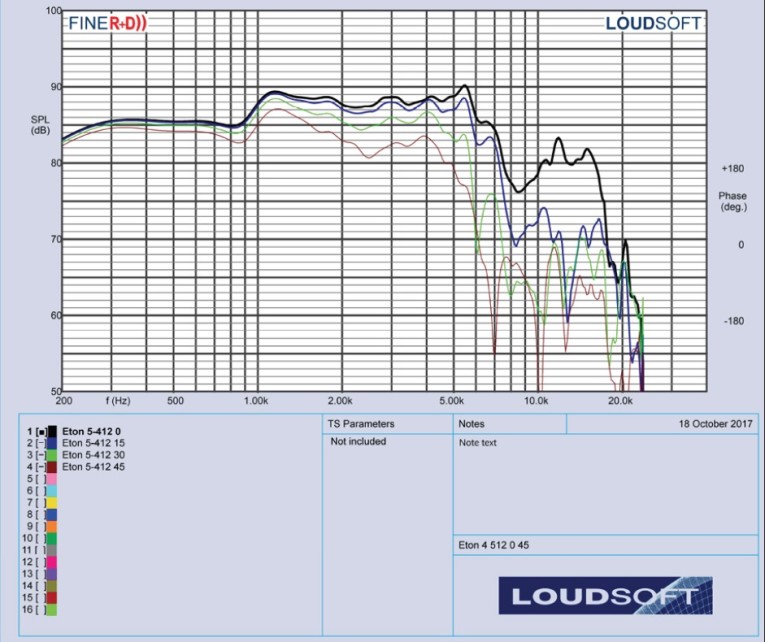

While FINE R+D comes calibrated from the factory, the procedure is quick and painless. You start by selecting the calibration Wizard. The first step is to set the output voltage level by connecting a DVM to the speaker output and hitting the test button. This is followed by connecting the loop-back cable to set the SPL gain by hitting the “measure” button and entering the resulting figure. In a likewise manner, impedance is then calibrated. This includes using two resistor values, do the measurement and entering the values. The final calibration step is to either measure the microphone level with a 1 kHz calibrator and enter the value, or as in my case, enter the decibel re 1 V/Pa value that was provided with your microphone. In the case of the G.R.A.S. Type 46BE, provided by the nice folks at G.R.A.S., the microphones are freshly calibrated by the calibration lab at G.R.A.S. Sound and Vibration North America. One of the drivers sent to me this month for the Test Bench column was the Eton 4-512 4” mid-bass driver. The sound pressure level and impedance data in the Eton report was measured with the LinearX LMS analyzer. However, Figures 1–3 show the driver’s on-axis response, 0° to 45° and the free-air impedance curve when using the Loudsoft FINE R+D analyzer.
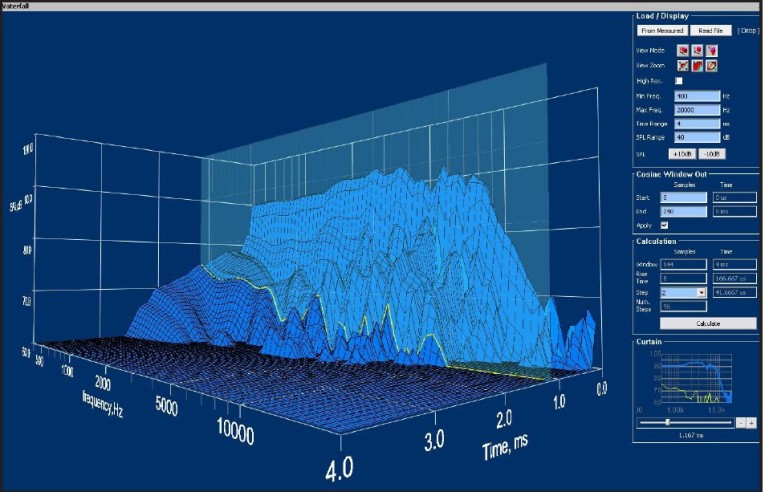
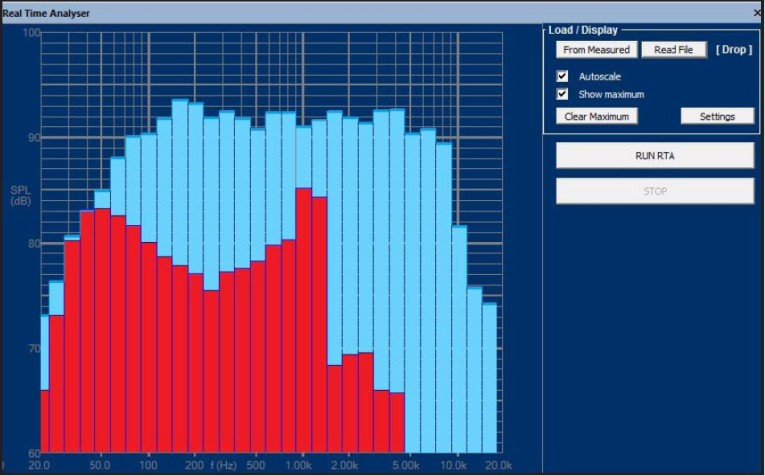
Figures 4–7 display some example graphs (not using the Eton 4-512) from FINE R+D, including a cumulative spectral decay (CSD) waterfall plot, a RTA, polar plot, and a contour plot derived from polar data. Overall, FINE R+D is a very versatile analyzer that has most all the bells and whistles required for loudspeaker product development, not to mention its complete integration with all of LOUDSOFT’s CAD software, including FINE DSP, FINE X-over, FINEBox, FINEMotor, and FINECone!
Again, I would like to thank LOUDSOFT and G.R.A.S. Sound and Vibration for making these excellent tools available to us for the Test Bench column! For more information about LOUDSOFT products, please visit www.loudsoft.com, and to learn more about G.R.A.S. microphones and its other acoustic measurement products, go to www.gras.dk. VC
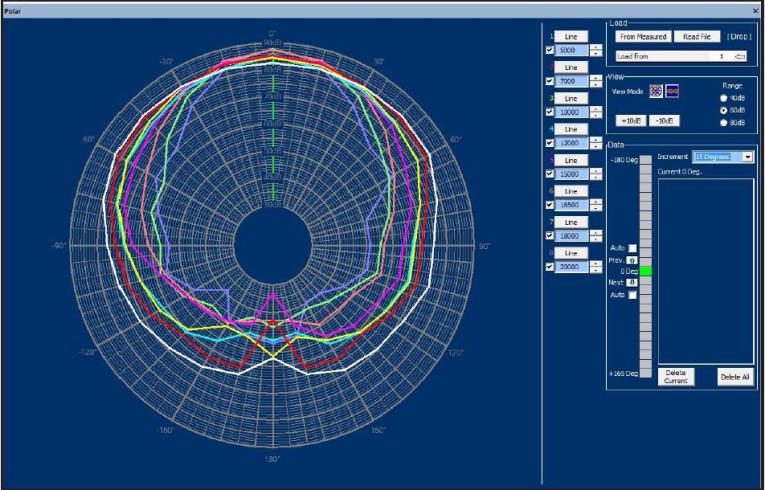

This article was originally published in Voice Coil, December 2017.




